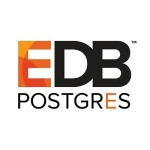We use Oracle Enterprise Manager primarily for database management, with a focus on performance monitoring.
Our environments are composed of both standalone and cluster databases which, in turn, are deployed in Oracle appliances like ODA and Exadata, as well as others hardware vendors.
In addition, we use the tool to create, configure and manage high-availability environments using Oracle Data Guard and Real Application Clusters, automation of manual activities and patching.
With Enterprise Manager, we have achieved a dramatic decrease in the number of database incidents. As a result, unplanned downtime has been reduced because we are resolving issues before the business is even aware of them.
The product has powerful features for diagnosis of database issues, complemented with tuning capabilities for most of the issues found.
With ASH Analytics, ADDM, Real-Time SQL Monitoring, SQL Tuning Advisor, we can measure SLAs, detect performance hotspots, perform deep diagnostics into specific tiers, tune applications, and remediate.
Oracle is always making improvements to Oracle Enterprise Manager. I think Enterprise cloud integration presents new management challenges.
More than five years.
We always strive to have the latest version of this product, which has always helped to improve stability and performance.
Yes, we encountered scalability issues. However, there are several techniques for achieving optimal performance. It can also help with capacity planning, sizing, and maximizing overall performance in a large scale environment.
Inadequately-sized Enterprise Manager deployments may result in the overall benefits of Enterprise Manager being compromised.
The initial setup is pretty straightforward. Today, you can even download the templates found on the Oracle website.
The basic functions are free. You only pay license fees for advanced features.
I’ve been using this product for years. I evaluated other options from different vendors such as Foglight and SolarWinds, to name a couple.
To me this is the best product for enterprise database management. I rate it a 10 out of 10.
Now, before you implement, you can do several tests with the Enterprise Manager templates VMS, available from Oracle. Also, check the compatibility matrix and try to always keep your system up to date.










You marked technical support as 4. Can you please share an example where you had a delayed response or difficulty in getting support from Oracle?